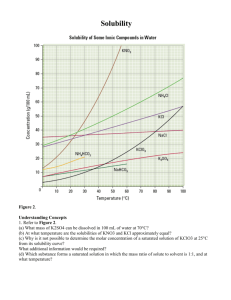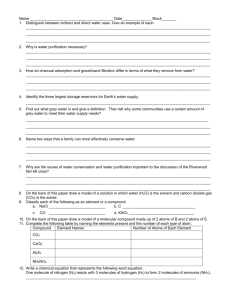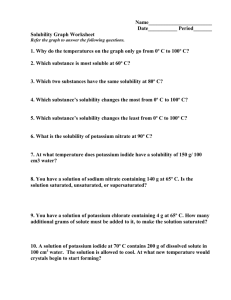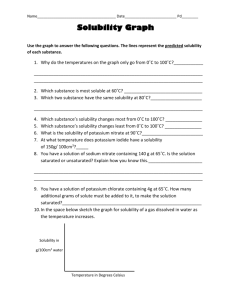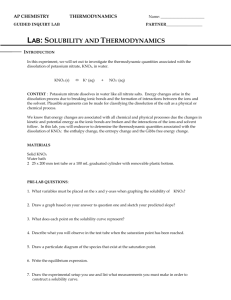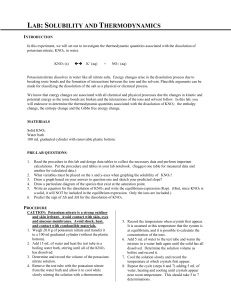Solubility Graphs Ch. 23
advertisement
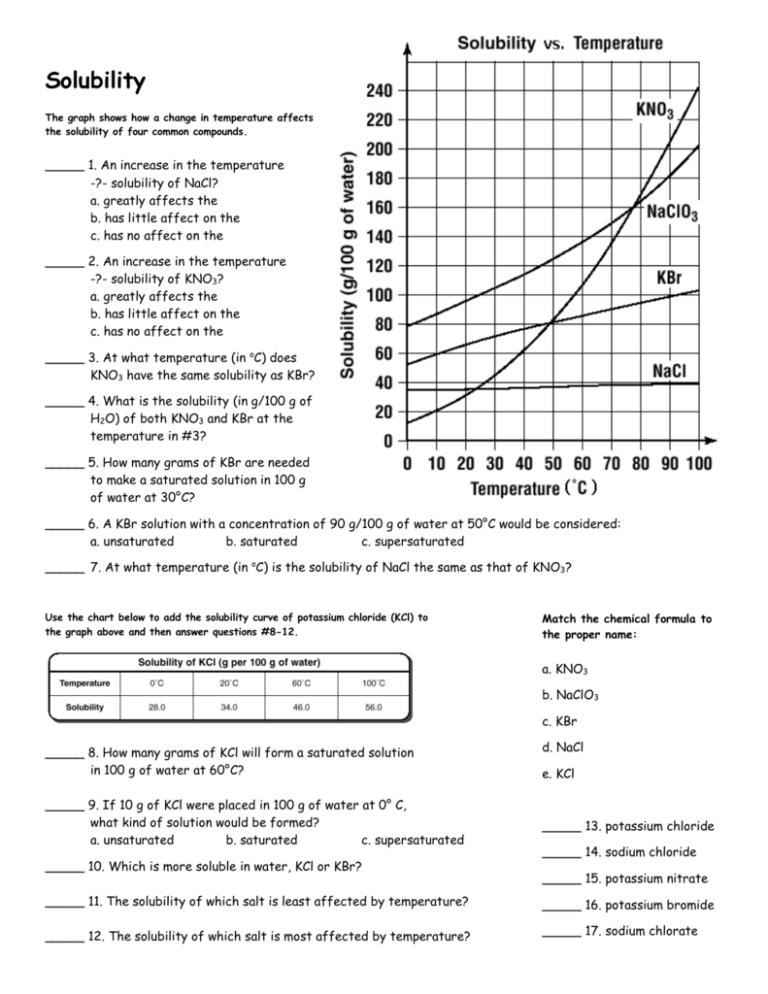
Solubility The graph shows how a change in temperature affects the solubility of four common compounds. _____ 1. An increase in the temperature -?- solubility of NaCl? a. greatly affects the b. has little affect on the c. has no affect on the _____ 2. An increase in the temperature -?- solubility of KNO3? a. greatly affects the b. has little affect on the c. has no affect on the _____ 3. At what temperature (in oC) does KNO3 have the same solubility as KBr? _____ 4. What is the solubility (in g/100 g of H2O) of both KNO3 and KBr at the temperature in #3? _____ 5. How many grams of KBr are needed to make a saturated solution in 100 g of water at 30°C? _____ 6. A KBr solution with a concentration of 90 g/100 g of water at 50°C would be considered: a. unsaturated b. saturated c. supersaturated _____ 7. At what temperature (in oC) is the solubility of NaCl the same as that of KNO3? Use the chart below to add the solubility curve of potassium chloride (KCl) to the graph above and then answer questions #8-12. Match the chemical formula to the proper name: a. KNO3 b. NaClO3 c. KBr _____ 8. How many grams of KCl will form a saturated solution in 100 g of water at 60°C? _____ 9. If 10 g of KCl were placed in 100 g of water at 0° C, what kind of solution would be formed? a. unsaturated b. saturated c. supersaturated _____ 10. Which is more soluble in water, KCl or KBr? d. NaCl e. KCl _____ 13. potassium chloride _____ 14. sodium chloride _____ 15. potassium nitrate _____ 11. The solubility of which salt is least affected by temperature? _____ 16. potassium bromide _____ 12. The solubility of which salt is most affected by temperature? _____ 17. sodium chlorate
